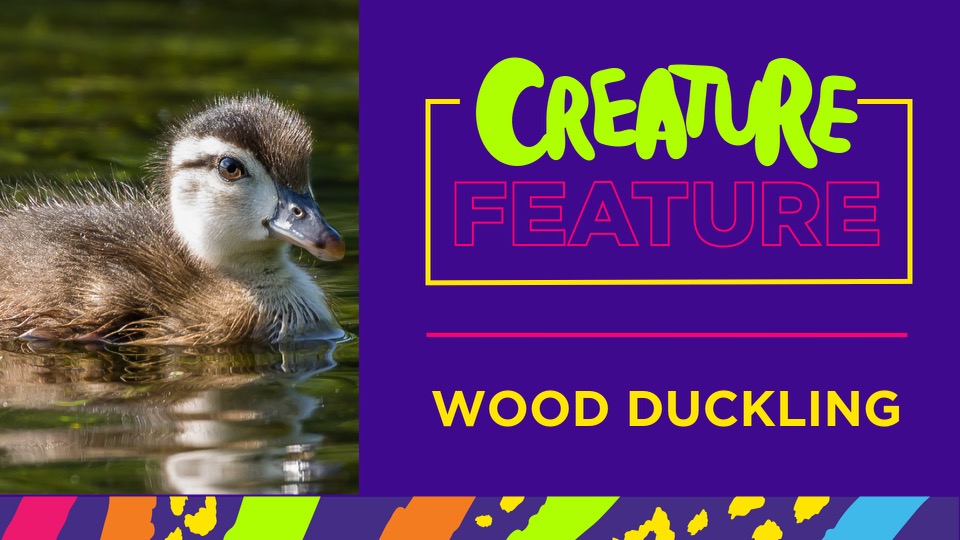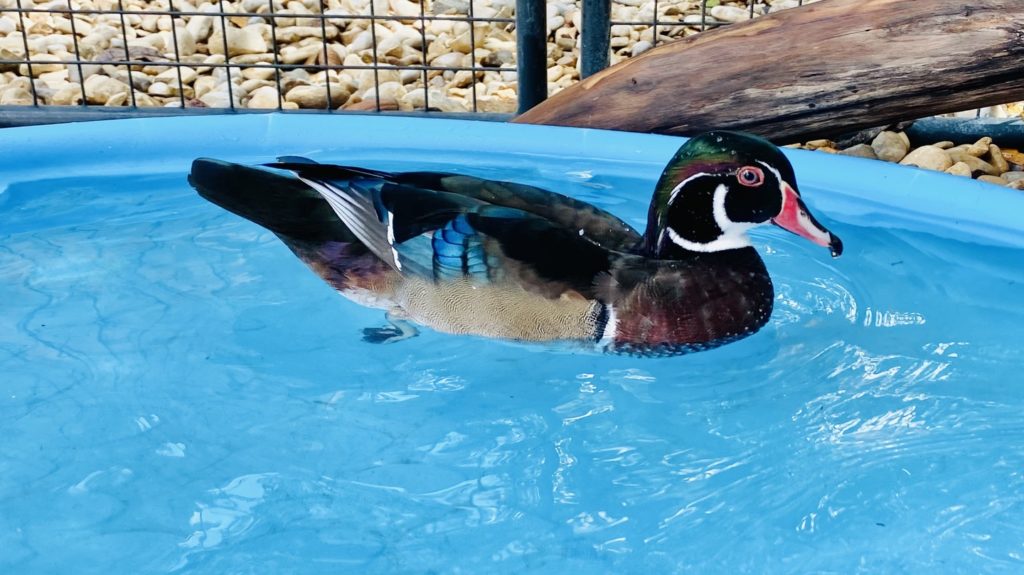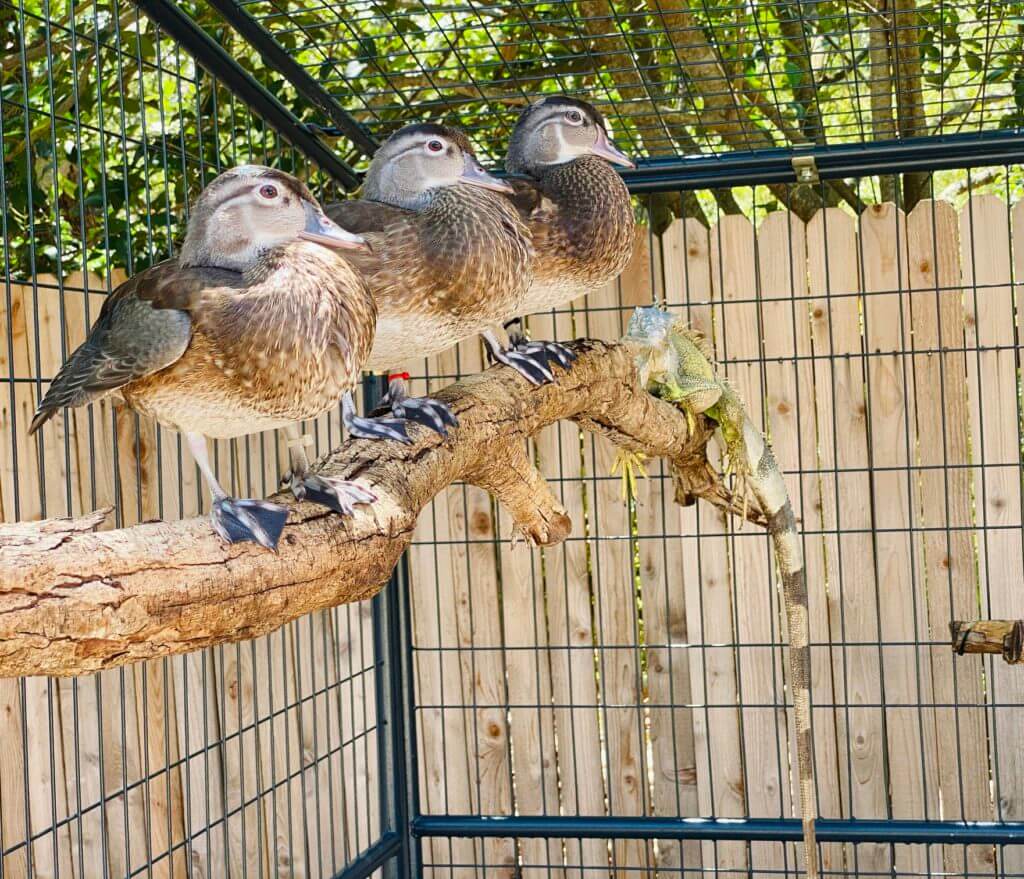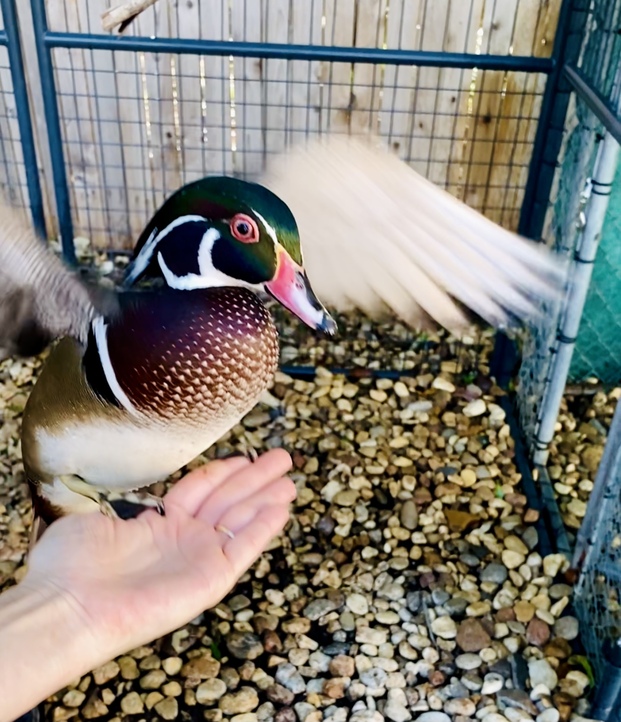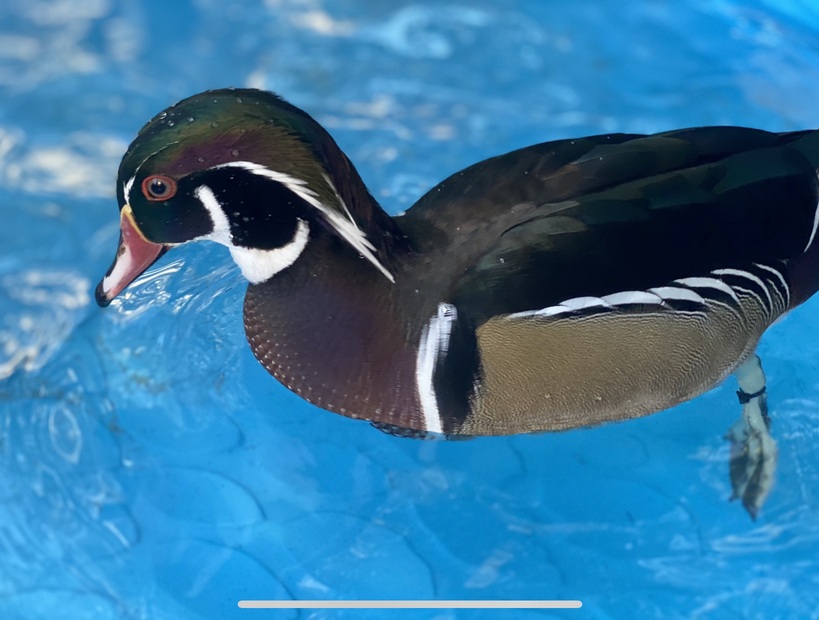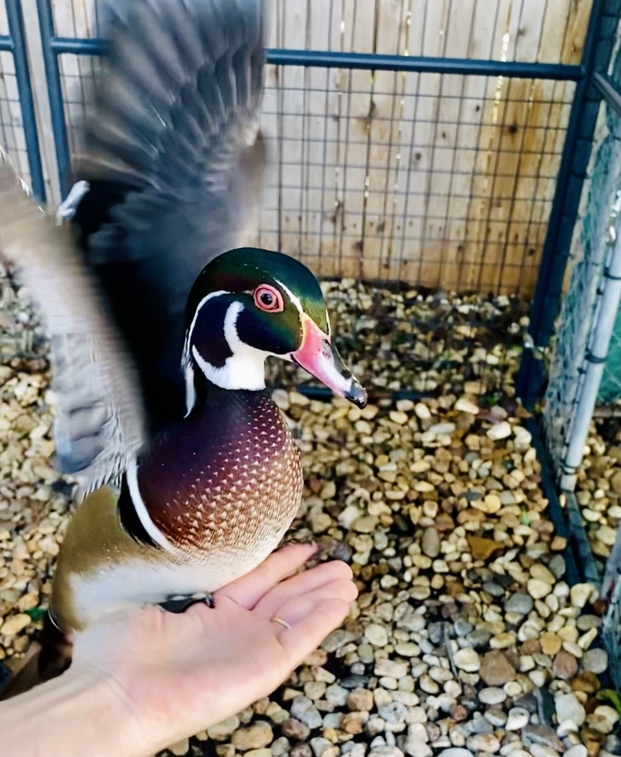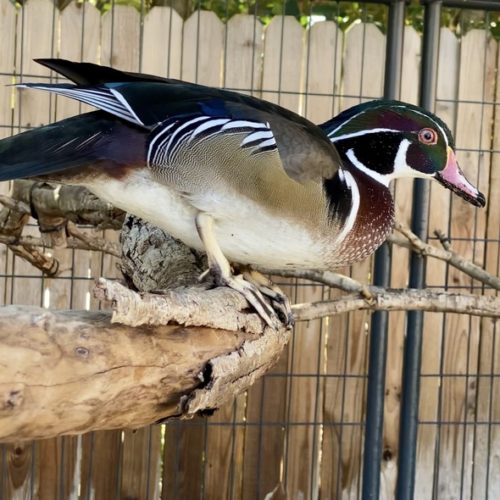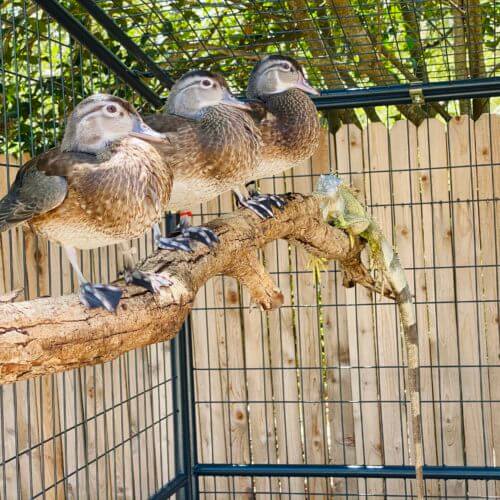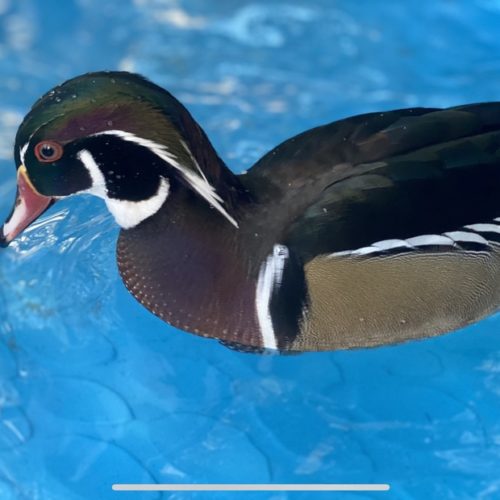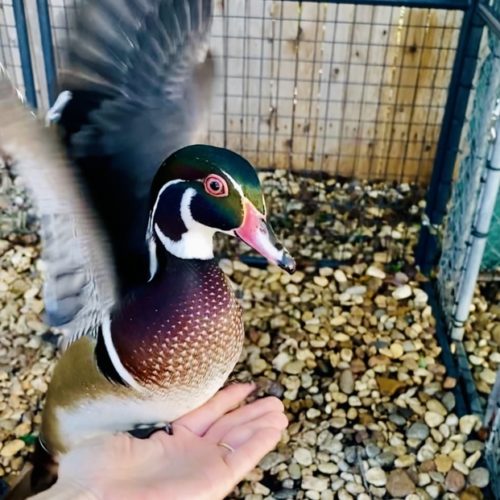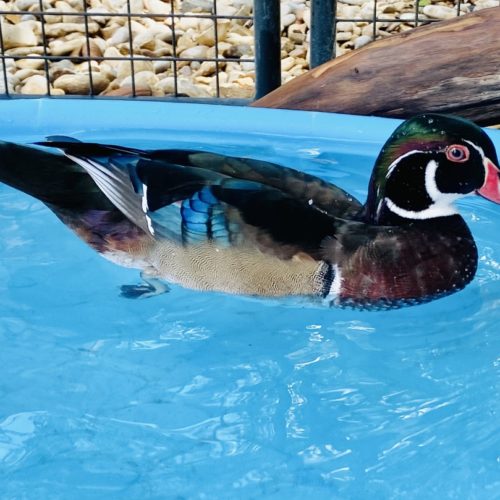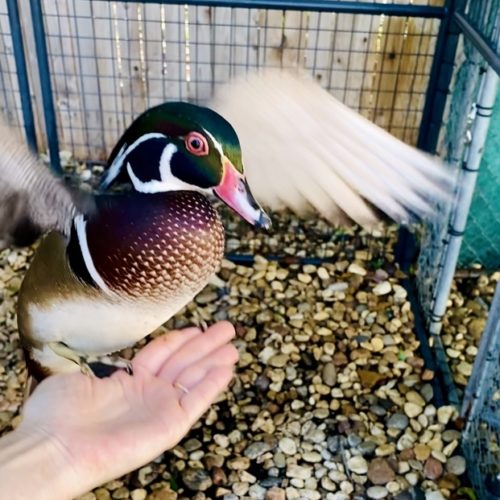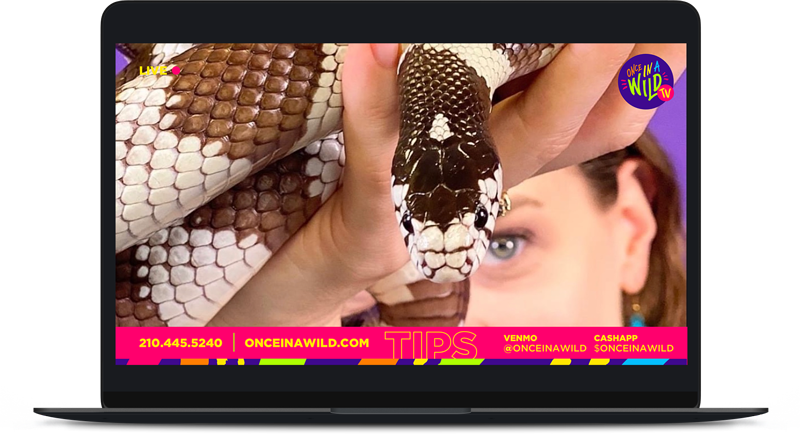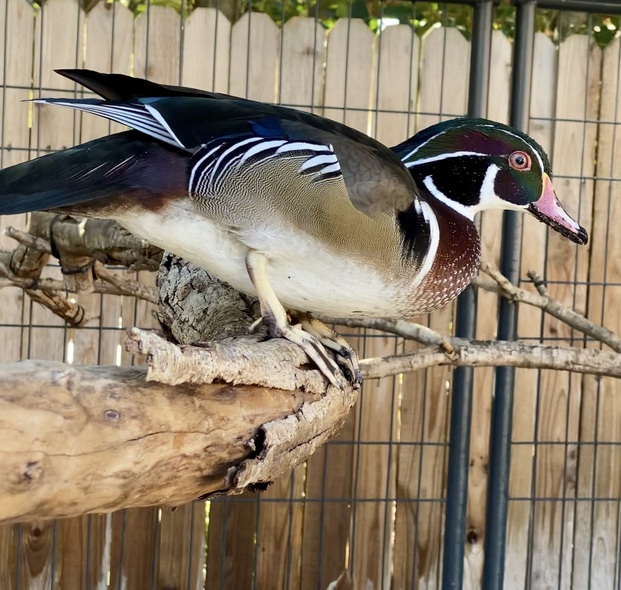
DOWNLOAD ANIMAL FACT SHEET (PDF)
Wood Duck Facts
FUN FACTS
The scientific name for the Wood Duck is Aix sponsa, which loosely translates to “water bird in a bridal gown.” Wood Ducks are one of the most stunningly beautiful species of water fowl in all of nature. They are sexually dimorphic, meaning males and females look different from one another. The male has beautiful brightly colored and iridescent plumage which is used in attracting a mate each year. Females are also beautiful, but are more naturally colored with mostly brown feathers. Even their eye color is totally different. The male Wood Duck has bright red eyes, and the female has deep brown eyes. Wood Ducks get their common name from their habit of roosting in trees more often than other ducks, and from the way that they nest. They are cavity nesters, and when a female is ready to lay her average of seven to fourteen eggs, she will seek out a hollow tree hole (usually an abandoned home of another animal, or a tree that has naturally rotted.) Arguably though, the most impressive thing about Wood Ducks occurs when they are only twenty-four hours old. After the day-old chicks recover from hatching, they start to become hungry. Then their mother will instinctively fly out of the nest, and the babies take a drastic leap of faith onto the ground or into the water below –sometimes from as high as 50 feet up– to follow her!

Watch Our Livestream
EVERY WEDNESDAY AT 6:30 PM CST
HOW WE CARE FOR OUR ANIMALS
The most important members of the Once in a Wild team are ofcourse our animals! These creatures serve as amazing ambassadors for their species. All of our animals are professionally trained, handled, taken care of, and endlessly loved by our wonderful staff. If you would like to learn more about our animals and the care they receive, please follow the links below:
